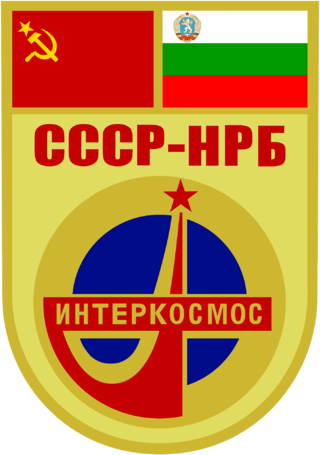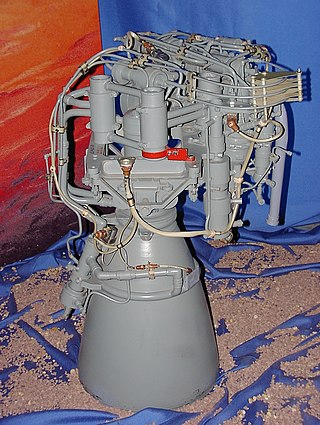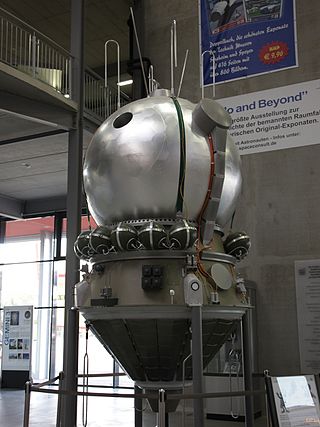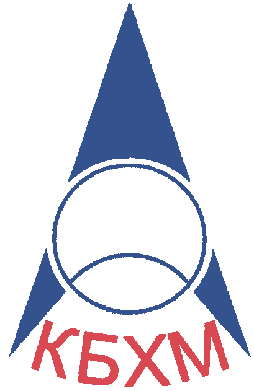Related Research Articles

Soyuz is a series of spacecraft which has been in service since the 1960s, having made more than 140 flights. It was designed for the Soviet space program by the Korolev Design Bureau. The Soyuz succeeded the Voskhod spacecraft and was originally built as part of the Soviet crewed lunar programs. It is launched on a Soyuz rocket from the Baikonur Cosmodrome in Kazakhstan. Between the 2011 retirement of the Space Shuttle and the 2020 demo flight of SpaceX Crew Dragon, the Soyuz served as the only means to ferry crew to or from the International Space Station, for which it remains heavily used. Although China did launch crewed Shenzhou flights during this time, none of them docked with the ISS.

Vostok was a family of rockets derived from the Soviet R-7 Semyorka ICBM and was designed for the human spaceflight programme. This family of rockets launched the first artificial satellite and the first crewed spacecraft (Vostok) in human history. It was a subset of the R-7 family of rockets.

Soyuz TMA-1, also catalogued as Soyuz TM-35, was a 2002 Soyuz mission to the International Space Station (ISS) launched by a Soyuz FG launch vehicle with a Russian-Belgian cosmonaut crew blasted off from the Baikonur Cosmodrome in Kazakhstan. This was the fifth Russian Soyuz spacecraft to fly to the ISS. It was also the first flight of the TMA-class Soyuz spacecraft. Soyuz TM-34 was the last of the prior Soyuz-TM spacecraft to be launched.

Soyuz 33 was an April, 1979, Soviet crewed space flight to the Salyut 6 space station. It was the ninth mission to the orbiting facility, but an engine failure forced the mission to be aborted, and the crew had to return to Earth before docking with the station. It was the first failure of a Soyuz engine during orbital operations.

The Soyuz-TM were fourth generation (1986–2002) Soyuz spacecraft used for ferry flights to the Mir and ISS space stations. The Soyuz spacecraft consisted of three parts, the Orbital Module, the Descent Module and the Service Module.

The Soviet Union planned several military Soyuz spacecraft models. These versions were named Soyuz P, Soyuz PPK, Soyuz R, Soyuz 7K-VI, and Soyuz OIS . However, none ever flew in space.

The Soyuz-T spacecraft was the third generation Soyuz spacecraft, in service for seven years from 1979 to 1986. The T stood for transport. The revised spacecraft incorporated lessons learned from the Apollo Soyuz Test Project, Soyuz 7K-TM and Military Soyuz.

The Soyuz-TMA is a spacecraft used by the Russian Federal Space Agency for human spaceflight. It is a revision of the Soyuz spacecraft and was superseded in 2010 by the Soyuz TMA-M.(T – транспортный – Transportnyi – meaning transport, M – модифицированный – Modifitsirovannyi – meaning modified, A – антропометрический, – Antropometricheskii meaning anthropometric). The spacecraft features several changes to accommodate requirements requested by NASA in order to service the International Space Station, including more latitude in the height and weight of the crew and improved parachute systems. It is also the first expendable vehicle to feature a "glass cockpit". Soyuz-TMA looks identical to the earlier Soyuz-TM spacecraft on the outside, but interior differences allow it to accommodate taller occupants with new adjustable crew couches.

Progress-M1 (Russian: Прогресс-М1, GRAU indices 11F615A55 and 11F615A70), also known as Progress 7K-TGM1, is a Russian spacecraft which is used to resupply space stations. It is a variant of the Progress spacecraft, derived from the Progress-M, but modified to carry more UDMH and N2O4 propellant for refuelling the International Space Station instead of other cargoes such as water. A Progress M1 11F615A55 spacecraft could carry up to 1,700 kilograms (3,700 lb) of propellant in eight mid-section refuelling tanks, compared to the 850 kilograms (1,870 lb) that a Progress-M of the same generation could carry. This propellant can be transferred to the Space Station's own propulsion system through fluid connectors in the docking ring, or it can alternatively be used by the Progress' thrusters to boost the station altitude or to change its orientation, or attitude, in space. In addition to propellant, the spacecraft can also carry up to 1,800 kilograms (4,000 lb) (6 cubic meters volume) of supplies in its forward pressurized cargo module (including a maximum of 40 kilograms (88 lb) of compressed air), but the combination of pressurized cargo and refuelling propellant cannot exceed 2,500 kilograms (5,500 lb) or the maximum capability of the launch vehicle. The tare weight of Progress-M1 is 5,050 kilograms (11,130 lb). Its KTDU-80 engine has a thrust of 2,950 newtons (660 lbf) and uses up to 892 kilograms (1,967 lb) of propellant carried in four integrated spherical tanks for maneuvers such as docking and deorbiting the craft; 185 kilograms (408 lb) to 250 kilograms (550 lb) is typically left unused and hence available for the space station.
The S5.98M, also known as the 14D30, is a Russian rocket engine, currently powering the Briz upper stages. It was designed by KB KhIMMASH, the famous Isaev designed bureau, and it burns UDMH and N2O4 in a gas-generator cycle.
KVD-1 was an upper stage LOX/LH2 cryogenic engine developed by the Isayev Design Bureau (now KB KhIMMASH) of Russia in the early 1960s. It is a modified version of the RD-56, developed for a never-completed cryogenic upper stage of the N-1 super-heavy lift rocket, with the goal of enabling crewed lunar missions by the USSR. The KVD-1 produces a thrust of 7.5 tonnes.

The Soyuz MS is a revision of the Russian spacecraft series Soyuz first launched in 2016. It is an evolution of the Soyuz TMA-M spacecraft, with modernization mostly concentrated on the communications and navigation subsystems. It is used by Roscosmos for human spaceflight. The Soyuz MS has minimal external changes with respect to the Soyuz TMA-M, mostly limited to antennas and sensors, as well as the thruster placement.

The S5.92 is a Russian rocket engine, currently used on the Fregat upper stage.

The S5.4, was a Russian liquid rocket engine burning TG-02 and AK20F in the gas generator cycle. It was originally used as the braking (deorbit) engine of the Vostok, Voskhod, and Zenit spacecraft, which later switched to solid engines.
The KTDU-35 was a Soviet spacecraft propulsion system composed of two liquid rocket engines, the primary, S5.60 (SKD) and the secondary S5.35 (DKD), fed from the same propellant tanks. Both engines burn UDMH and AK27I in the gas generator cycle. It was designed by OKB-2, the famous Isaev Design Bureau, for the original Soyuz programme.

The KTDU-80 (Russian: Корректирующе-Тормозная Двигательная Установка, КТДУ) is the latest of a family of integrated propulsion system that KB KhIMMASH has implemented for the Soyuz since the Soyuz-T. It integrates main propulsion, RCS and attitude control in a single system pressure fed from a common dual string redundant pressurized propellant system. The common propellant is UDMH and N2O4 and the main propulsion unit, is the S5.80 main engine. It generates 2.95 kN (660 lbf) of thrust with a chamber pressure of 880 kPa (128 psi) and a nozzle expansion of 153.8 that enables it to achieve a specific impulse of 302 s (2.96 km/s). It is rated for 30 starts with a total firing time of 890 seconds. The integrated system without the pressurization or tanks weighs 310 kg (680 lb); it is 1.2 m (47 in) long with a diameter of 2.1 m (83 in).
The S5.80 is a liquid pressure-fed rocket engine burning N2O4/UDMH with an O/F of 1.85. It is used for crew-rated spacecraft propulsion applications. It is currently used in the Soyuz-TMA-M spacecraft propulsion module KTDU-80, and its sibling, the S5.79 rocket engine, is still used as the main propulsion of the Zvezda ISS module. The S5.80 generates 2.95 kN (660 lbf) of thrust with a chamber pressure of 0.88 MPa (128 psi) and a nozzle expansion of 153.8 that enables it to achieve a specific impulse of 302 s (2.96 km/s). It is rated for 30 starts with a total firing time of 890 seconds. The engine, without the pressurization system or propellant tanks, weighs 310 kg (680 lb) and is an integrated unit that is 1.2 m (47 in) long with a diameter of 2.1 m (83 in).

The A.M. Isayev Chemical Engineering Design Bureau, also known as KB KhimMash or just KBKhM, is a Russian rocket engine design and manufacturing company. It is located in the city of Korolyov. It started as the OKB-2 division of the NII-88 research institute, where A.Isaev directed the development of liquid rocket engines for ballistic missile submarines.

FSUE Research and Development Institute of Mechanical Engineering, also known as NIIMash, is a Russian rocket engine design and manufacturing company specialized in small thrusters. It is located in the city of Nizhnyaya Salda, Sverdlovsk Oblast. It started as the B-175 factory of the NII-1 research institute, where Mikhail G. Mironov directed the development of liquid rocket engines research and testing.
The 11D428A-16 (manufacturer's name RDMT-135M) is a liquid pressure-fed rocket engine burning N2O4/UDMH with an O/F of 1.85. It is used for crew-rated spacecraft propulsion applications. It is currently used in the KTDU-80 spacecraft propulsion module. The previous version, the 11D428A (manufacturer's name RDMT-135) is still used as the reaction control system thrusters of the Zvezda ISS module. The 11D428A-16 generates 129.16 N (29.04 lbf) of thrust with a chamber pressure of 0.88 MPa (128 psi) and achieves a specific impulse of 291 s (2.85 km/s). It is rated for 500,000 starts with a certified ignition time of 0.03 seconds to 2000 seconds. Each unit weights 1.5 kg (3.3 lb).
References
- 1 2 3 4 5 6 "ЖРДМТ от 0,5 кгс до 250 кгс" [Small thrust jet engine from 0.5 kgf to 250 kgf] (in Russian). KB KhIMMASH. Archived from the original on 23 April 2013.
- ↑ "Двигатели 1944-2000: Аавиационные, Ракетные, Морские, Промышленные" [Aviadvigatel 19442-2000: Aviation, rocketry, naval and industry](PDF) (in Russian). pp. 75–81. Retrieved 2015-07-25.
- 1 2 Pillet, Nicolas. "Le système de propulsion du vaisseau Soyouz" [The propulsion system of the Soyuz spacecraft] (in French). Kosmonavtika.com. Retrieved 2015-07-14.
- 1 2 3 "Основные двигатели разработки КБХМ" [The main engines produced by KbKhA] (in Russian). Retrieved 2015-07-25.
- 1 2 3 RKK Energia (June 1999). "3.17. Комбинированная Двигательная Установка (КДУ) (Combined Propulsion System)". Soyuz Crew Operations Manual (SoyCOM) (ROP-19) Final . pp. 122–129 – via NASASpaceFlight.com.
- 1 2 Zak, Anatoly (2016-07-07). "Propulsion system for the Soyuz MS spacecraft". Russian Space Web. Retrieved 2016-07-06.
